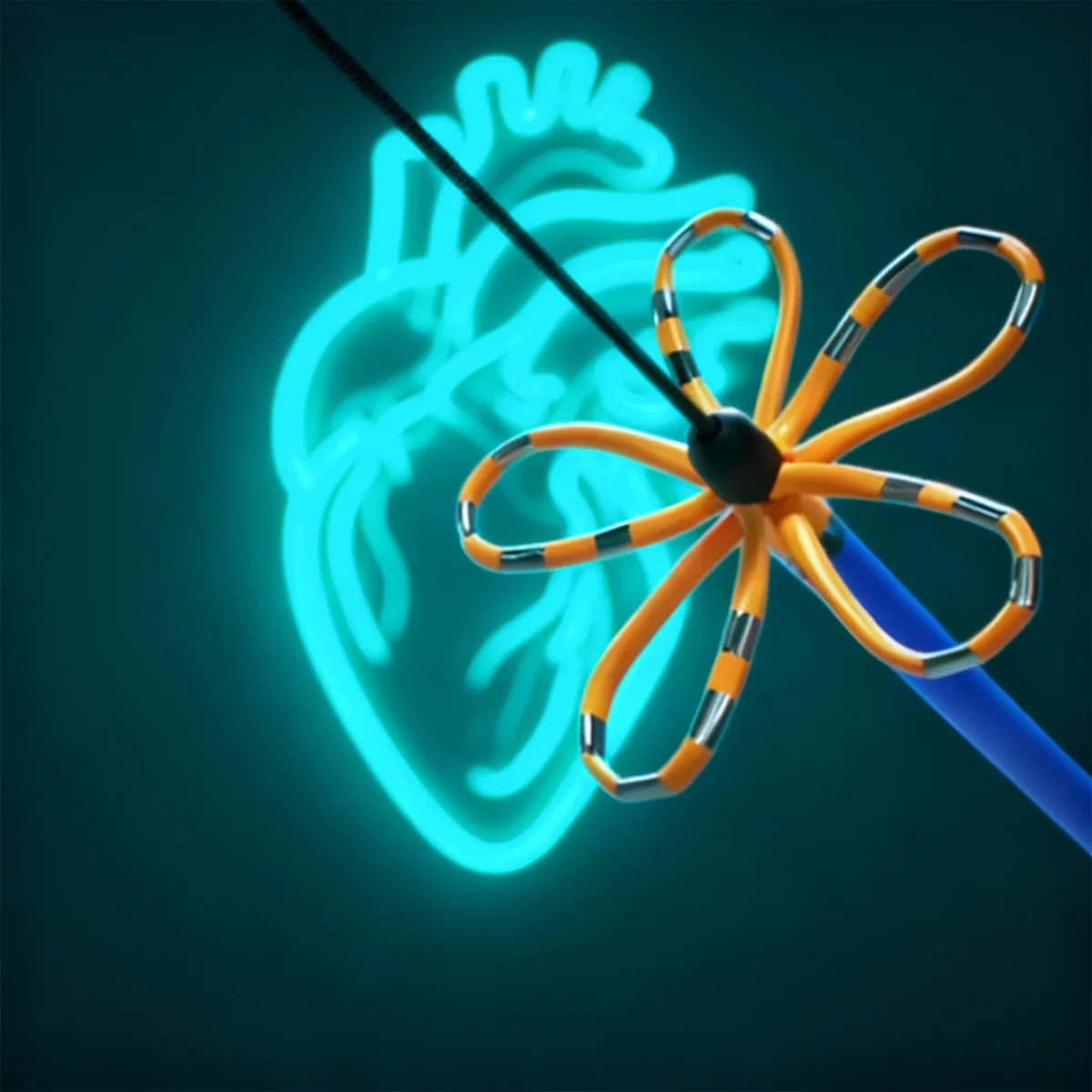Backing from influential NICE watchdog is a boost for Pulsed Field Ablation – and atrial fibrillation patients
NICE (the National Institute for Health and Care Excellence) recently issued its official guidance on Pulsed Field Ablation (PFA), a new technology that has been making waves in cardiology over the past couple of years. And for anyone who’s considering the procedure, it was very encouraging news.
After reviewing 19 sources of evidence, from systematic reviews to registry data and randomised controlled trials, NICE’s experts officially recommended PFA for treating atrial fibrillation (AFib) patients.
“Evidence shows the procedure reduces atrial fibrillation and its symptoms, increases quality of life in the short term, and raises no major safety concerns,” the committee explained in their briefing.
So why is this a significant development for atrial fibrillation treatment – and what could it mean for patients?
What is ablation?
Cardiac ablation is a common procedure for treating heart rhythm problems (arrhythmias). Arrhythmias happen when the electrical system regulating your heartbeat develops a fault. In the case of AFib, the upper chambers (atria) start to contract irregularly, and the heart often beats more rapidly. This can raise the risk of serious heart complications like stroke and cause a range of unpleasant symptoms. Ablation works by creating tiny scars in the heart tissue where the fault originated. This blocks the rogue electrical signals so the heart can return to a normal rhythm.
What’s different about Pulsed Field Ablation?
In standard ablation, there are two main ways to create the scars: radiofrequency waves and cryoablation. In simple terms, radiofrequency ablation uses heat energy to scar the tissue (rather like a very small microwave); cryoablation uses cold energy, with an instrument temperature of about -40 to -60C. PulsedField Ablation is a non-thermal alternative to these techniques. Instead of hot/cold energy, it uses rapid, high-voltage electrical pulses to create the scars.
What’s the advantage of the Pulsed Field technique?
The researchers found PFA to be as effective at treating atrial fibrillation as thermal ablations. In other words, it can reduce AFib and its symptoms, and increase patients’ quality of life accordingly. But it has some other important benefits too:
- Controlled – PFA is extremely precise in the way it delivers energy; the scars it creates (essentially microscopic pores) are just a nanometre in diameter (for reference, a sheet of paper is about 100,000 nanometres wide)
- Specific – PFA can target cardiac tissue, which is very sensitive to electric field energy, more specifically than thermal ablations
- Safe – Because the technique is more tissue-specific, there’s less risk of collateral damage to nearby tissues, such as the oesophagus, the phrenic nerve (which controls the diaphragm), and other neighbouring nerves and blood vessels
- Less invasive – The precision and tissue-specificity should mean fewer complications, reduced inflammation and quicker recovery times
- Fast – Pulsed Field Ablation takes less time to perform than other types of ablation
What does NICE’s endorsement mean for patients?
Although NICE is a UK organisation, its recommendations often influence health and care decisions in many other countries. Their guidelines are based on extensive research into the available evidence and are assessed by a wide range of experts. In practical terms, this means their endorsement is going to boost health providers’ confidence in Pulsed Field Ablation and make the technology more widely available to patients – not just in the NHS but here in Ireland too. This should help drive down waiting lists, especially given that PFA is quick to perform. And that’s important for AFib, because we know that treating the condition earlier increases the likelihood of success.
Does Heart Rhythm Cardiologist offer Pulsed Field Ablation?
Yes. In fact, Dr Lyne was one of the first cardiologists in Ireland to use the treatment. PFA first arrived in Dublin in 2023, so we’ve been able to offer it to a growing number of patients with atrial fibrillation – and see how effective it can be at treating AFib and giving people back their quality of life. Worldwide, Pulsed Field Ablation has now been performed several hundred thousand times. With NICE’s endorsement, we’d expect those numbers to rise significantly over the next few years.
Would you like to know more about Pulsed Field Ablation and whether it might be appropriate for you or a loved one? Please give the team a call today and they’ll be happy to answer your questions and help you book a consultation with Dr Lyne. You can find all our contact details here.
For further reading
Interested in learning more about atrial fibrillation or how ablation works? You may find these articles helpful…
What are the types of cardiac ablation? Which one do I need?
What to know about the atrial fibrillation ablation procedure
Have questions about Cardiac Ablation? Get in touch with Dr Lyne at Heart Rhythm Cardiologist.
Pulsed Field Ablation at a glance: FAQs
Instead of using heat or cold energy like traditional methods, PFA uses rapid, high-voltage electrical pulses to create tiny scars in heart tissue.
PFA is more tissue-specific and precise, reducing the risk of damage to nearby structures like the oesophagus, phrenic nerve, and blood vessels.
NICE found that PFA reduces atrial fibrillation and symptoms, increases quality of life in the short term, and raises no major safety concerns.
PFA is extremely precise – the scars it creates are just a nanometre in diameter (a sheet of paper is about 100,000 nanometres wide).
The endorsement will boost healthcare providers’ confidence in PFA, making it more widely available and helping to drive down waiting lists. The procedure is also quicker to perform than other types of ablation.





